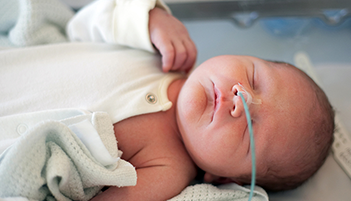HOW CAN WE HELP YOU? Call 1-800-TRY-CHOP
In This Section
What are Best Practices for Pediatric Nasogastric Tube Placement and Verification?

The findings:
Researchers have published best practice recommendations for nasogastric (NG) tube location placement and verification in pediatric patients. Endorsed by the American Society for Parental and Enteral Nutrition (ASPEN), the recommendations include: provide education; use appropriate NGT placement and securing methods; measure gastric pH; consider a radiograph for any patient in whom there is a concern for correct NGT placement; and improve interpretation and communication about the radiograph.
Why it matters:
Upto this point, no standard for the NG tube insertion procedure existed in the United States. If performed improperly, the common practice has potentially serious or fatal complications, including tubes being placed in the child’s lung or snaking into the brain. In addition, the tube can be inserted into the small intestine rather than the intended target of the stomach.
Who conducted the study:
Lead author of the recommendations Sharon Irving, PhD, CRNP, FCCM, FAAN, is an assistant professor of Pediatric Nursing in the Department of Family and Community Health at the University of Pennsylvania School of Nursing with a clinical appointment as a nurse practitioner in the Pediatric Intensive Care Unit at Children’s Hospital of Philadelphia. Dr. Irving’s co-authors include experts from University of Manitoba and Children’s Hospital; Children’s Mercy Hospitalin Missouri; Children’s Hospital of Pittsburgh; University of Mississippi Medical Center School of Nursing; and ASPEN. While not a paper author, patient advocate Deahna Visscher — whose son’s death was due to a misplaced NG tube — provided valuable insight to the team, Dr. Irving said "She kept us honest and focused on why this is such an important issue.”
How they did it:
The work on the New Opportunities for Verification of Enteral Tube Location (NOVEL) Project began about five years ago with an extensive literature review on NG tube placement location in children. The team then conducted a survey of homecare providers and 63 hospitals on tube placement methods and confirmation techniques. They also reviewed current best practices in the United Kingdom, which has established clear guidelines on tube placement and location verification.
Quick thoughts:
“This is not the end all — these are recommendations,” Dr. Irving explained. “By reviewing the literature, we found these areas were not standardized, but they could be; and if these recommendations are followed, we believe it could enhance patient safety and standardize care.”
What’s next:
The group will take a slight pause following the recommendations’ publication in early September, but when they reconvene, they likely will zero in on variability in pH measurement, Dr. Irving said.
Where the study was published:
Nutrition in Clinical Practice
Where to learn more:
Learn more about the New Opportunities for Verification of Enteral Tube Location (NOVEL) Project, and see Penn Nursing’s press release.


